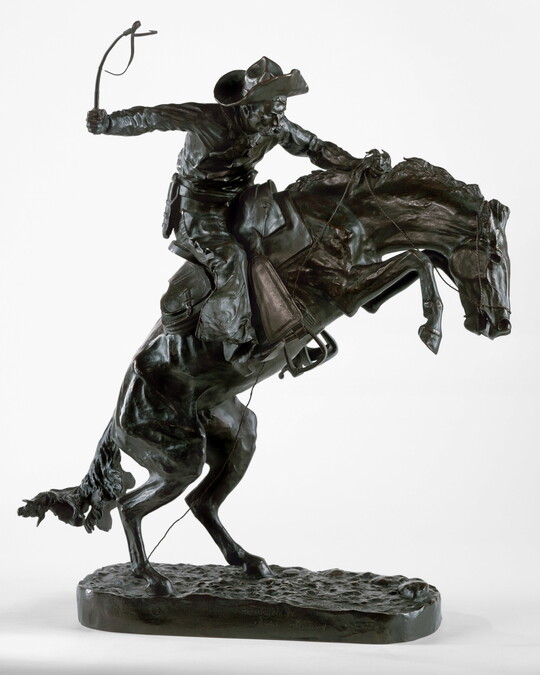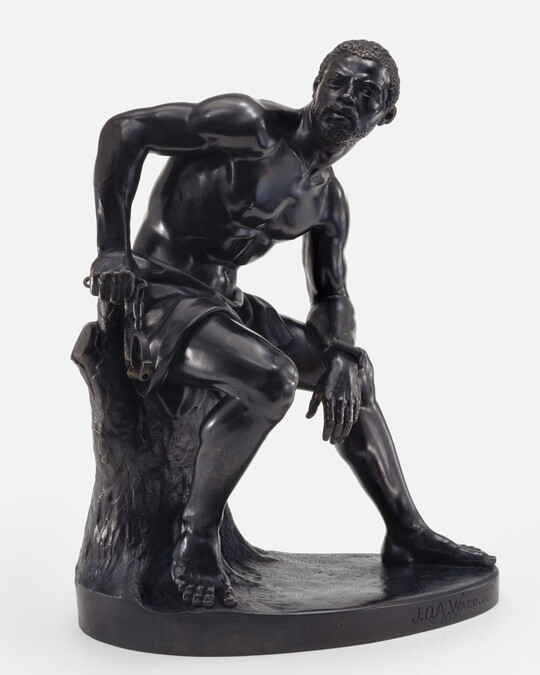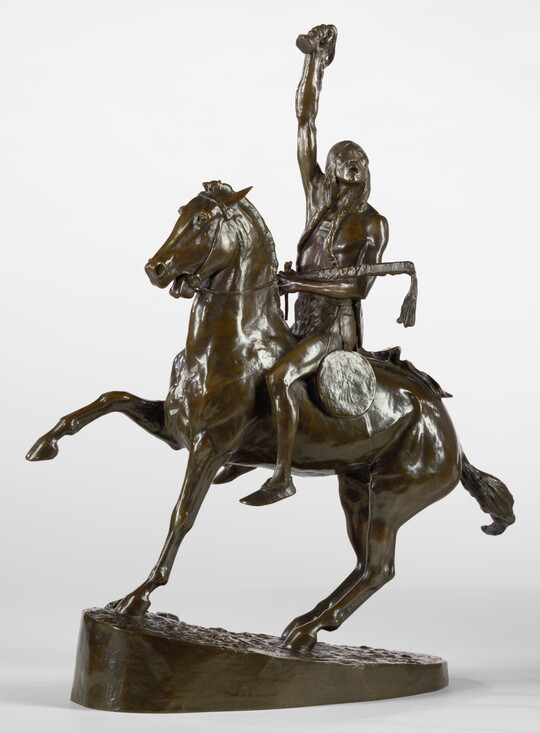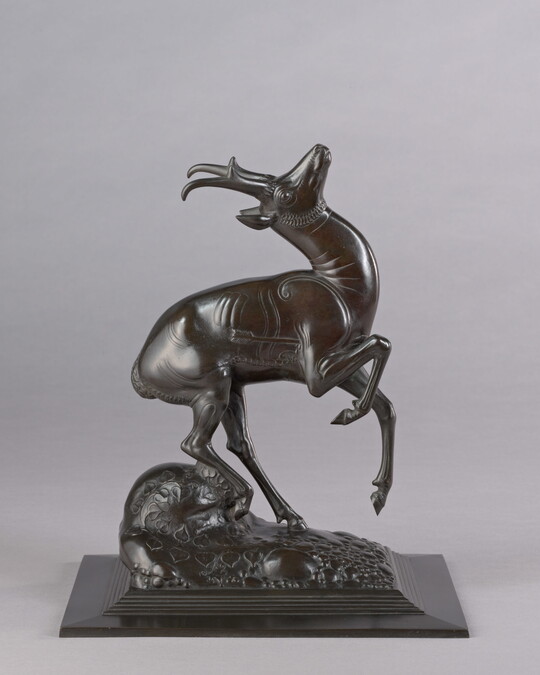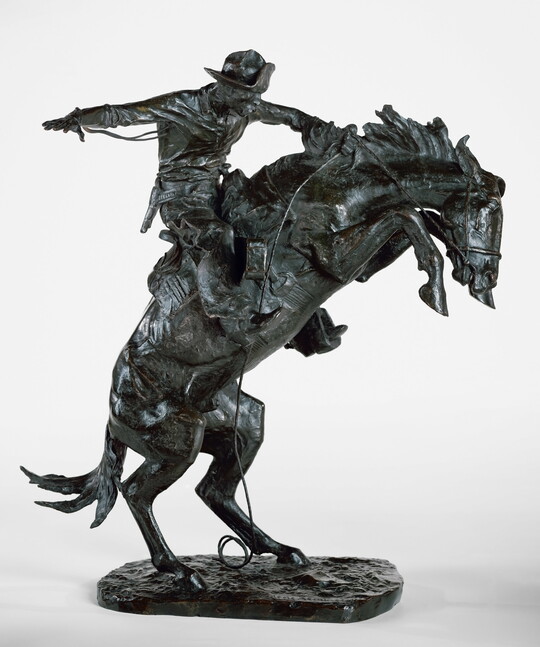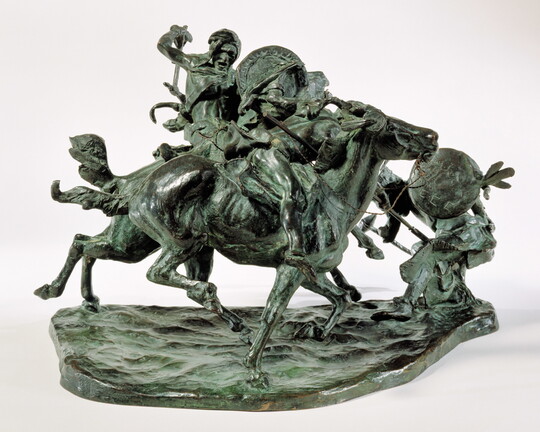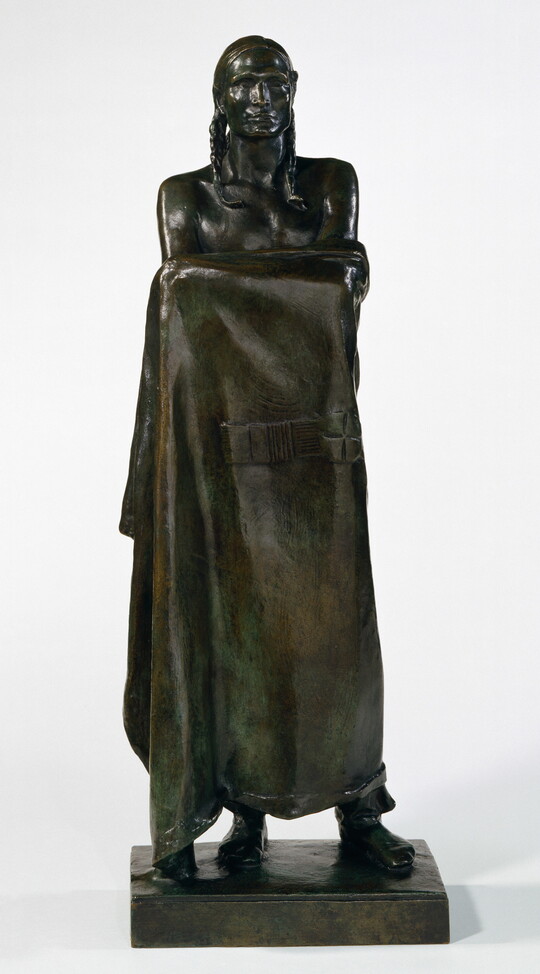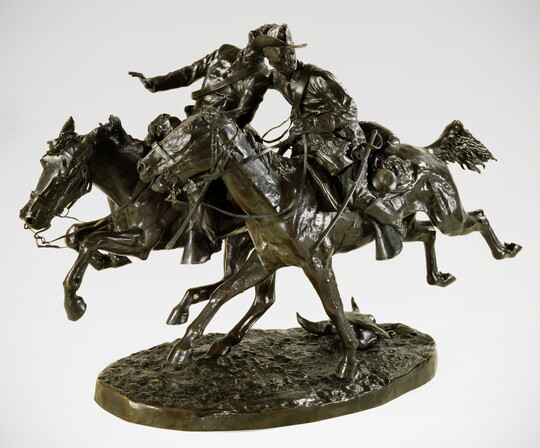



Artwork Images
Photo:
Controls
The Choosing of the Arrow
Object Details
-
Date
1848, cast 1849
-
Object Type
Sculptures
-
Medium
Bronze
-
Object Format
Sand casting
-
Dimensions
21 1/4 in.
Base: x 6 1/4 x 5 1/2 in. -
Edition
22 [lifetime cast]
-
Inscriptions
[None]
-
Credit Line
Amon Carter Museum of American Art, Fort Worth, Texas, Purchase with funds from the Ruth Carter Stevenson Acquisitions Endowment
-
Accession Number
1997.143
-
Copyright
Public domain
Additional details
Location: On view
See more by Henry Kirke Brown
Tags
-
How do works of art help us understand the lives of people of different times, places, and cultures?
What process might an artist follow in creating a bronze sculpture?
How do physical items like clothes and accessories, or physical aspects like facial expression and pose, convey a message to the viewer?
In what ways is the use of an image of a single person inadequate to represent a larger group?
-
Tell me about the man that you see in this sculpture. How would you describe the figure?
What is this man holding? What might he be doing? This sculpture’s title is The Choosing of the Arrow. He is holding the tools of a hunter—his left hand grips the bow, while his right hand reaches for an arrow.
What might we infer about him based on his body position, facial expression, or hairstyle?
What time period or culture do you think the artist was thinking of when sculpting this figure?
Brown was influenced by classical sculptures of ancient Greece and Rome. The figure depicted is of a young Native American, though he is posed as a young Apollo (a Greek god) preparing for the hunt. Before making this sculpture, Brown traveled to Mackinac Island on Lake Huron to make studies of the Ottawa and Ojibwe people there.
Does the sculpture look more like a real person or an idealized sculpture? What, if anything, did Brown take from his encounter with the Ottawa and Ojibwe in the making of this work? Who do you think was the artist’s target audience? Do you think the sculpture might have been made differently if he’d had a different audience in mind?
What information about this figure did the artist leave out? How might the sculpture have been made differently if it was created by a member of the Ottawa or Ojibwe tribes?
What material did the artist use to create this sculpture?
How does bronze casting compare to other sculptural processes? Brown’s artwork, commissioned in 1848 by the American Art-Union, was completed in 1849 and is one of the very first bronze sculptures cast in the United States.
-
Grades 6–12
Have students research various early American artists’ portrayals of Native Americans in sculpture. As a class, discuss the similarities and differences.
Share Educator Resources
Amon Carter Disclaimer
This information is published from the Carter's collection database. Updates and additions based on research and imaging activities are ongoing. The images, titles, and inscriptions are products of their time and are presented here as documentation, not as a reflection of the Carter’s values. If you have corrections or additional information about this object please email us to help us improve our records.
Every effort has been made to accurately determine the rights status of works and their images. Please email us if you have further information on the rights status of a work contrary or in addition to the information in our records.
Related Works
-
The Broncho Buster, 1895
Frederic Remington
Bronze
1961.2
-
The Freedman, 1863
John Quincy Adams Ward
Bronze
2000.15
-
Benediction, 1922
Daniel Chester French
Bronze
2005.17
-
The Scalp, 1898
Frederic Remington
Bronze
1961.397
-
Pronghorn Antelope, 1914
Paul Manship
Bronze
1997.3.B
-
The Broncho Buster, 1909
Frederic Remington
Bronze
1961.4
-
Counting Coup, 1905
Charles M. Russell
Bronze
1961.116
-
An American Stoic, 1912
Alexander Stirling Calder
Bronze
2002.4
-
The Wounded Bunkie, 1896
Frederic Remington
Bronze
1961.7



